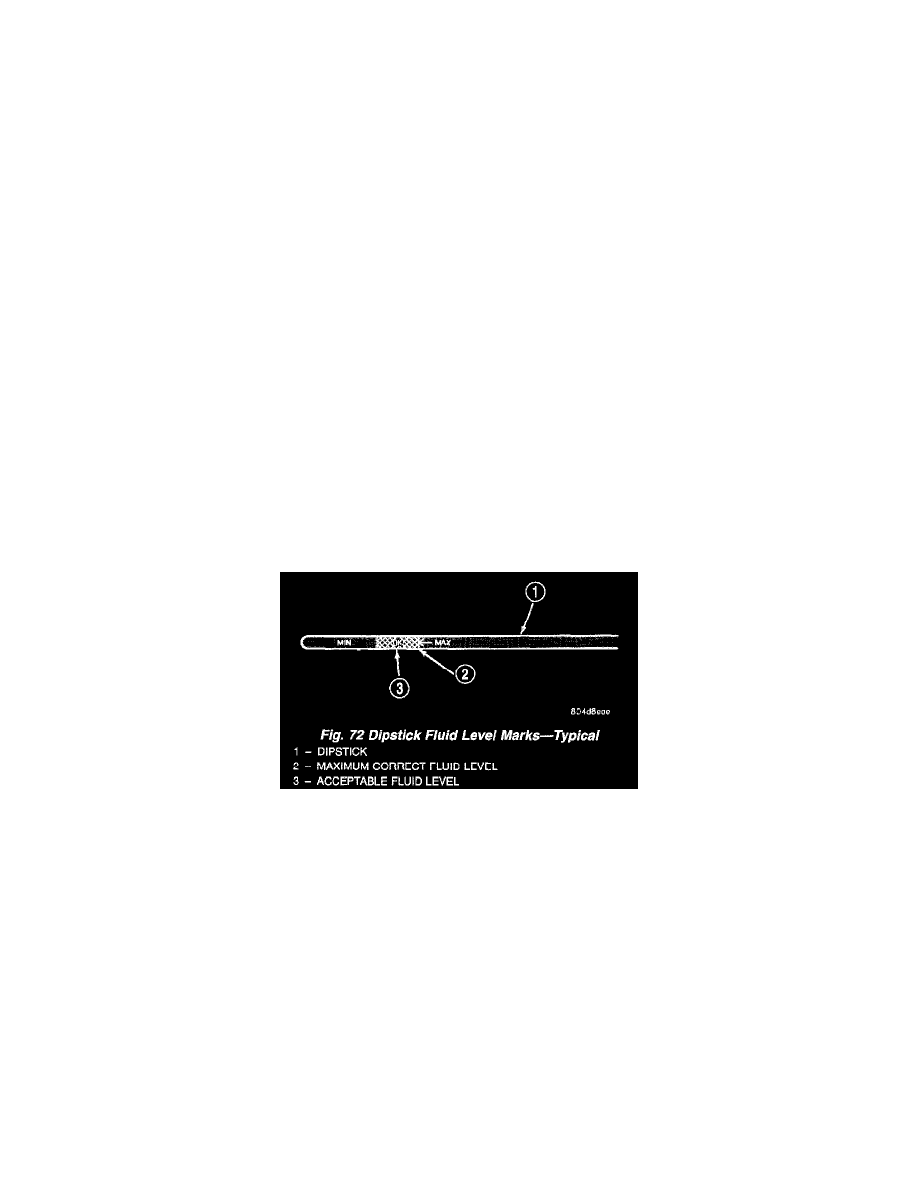RAM 1500 Truck 4WD V8-5.9L VIN Z (2002)

Fluid - A/T: Service and Repair
Fluid Level and Condition Check
Low fluid level can cause a variety of conditions because it allows the pump to take in air along with the fluid. As in any hydraulic system, air bubbles
make the fluid spongy, therefore, pressures will be low and build up slowly.
Improper filling can also raise the fluid level too high. When the transmssion has too much fluid, the geartrain churns up foam and cause the same
conditions which occur with a low fluid level.
In either case, air bubbles can cause overheating and/or fluid oxidation, and varnishing. This can interfere with normal valve, clutch, and accumulator
operation. Foaming can also result in fluid escaping from the transmission vent where it may be mistaken for a leak.
Along with fluid level, it is important to check the condition of the fluid. When the fluid smells burned, and is contaminated with metal or friction
material particles, a complete transmission recondition is needed. Be sure to examine the fluid on the dipstick closely. If there is any doubt about its
condition, drain out a sample for a double check.
After the fluid has been checked, seat the dipstick fully to seal out water and dirt.
The transmission has a dipstick to check oil level. It is located on the right side of the engine. Be sure to wipe all dirt from dipstick handle before
removing.
Fluid level is checked with the engine running at curb idle speed, the transmission in NEUTRAL and the transmission fluid at normal operating
temperature. The engine should be running at idle speed for at least one minute, with the vehicle on level ground.
Transmission fluid level should be checked monthly under normal operation. If the vehicle is used for trailer towing or similar heavy load hauling,
check fluid level and condition weekly. Fluid level is checked with the engine running at curb idle speed, the transmission in NEUTRAL and the
transmission fluid at normal operating temperature.
FLUID LEVEL CHECK PROCEDURE
1. Transmission fluid must be at normal operating temperature for accurate fluid level check. Drive vehicle if necessary to bring fluid temperature up
to normal hot operating temperature of 82 °C (180 °F).
2. Position vehicle on level surface.
3. Start and run engine at curb idle speed.
4. Apply parking brakes.
5. Shift transmission momentarily into all gear ranges. Then shift transmission back to Neutral.
6. Clean top of filler tube and dipstick to keep dirt from entering tube.
Fig. 72
7. Remove dipstick (Fig. 72) and check fluid level as follows:
a. Correct acceptable level is in crosshatch area.
b. Correct maximum level is to MAX arrow mark.
c. Incorrect level is at or below MIN line.
d. If fluid is low, add only enough Mopar ATF +4 to restore correct level. Do not overfill.
CAUTION: Do not overfill the transmission. Overfilling may cause leakage out the pump vent which can be mistaken for a pump seal leak.
Overfilling will also cause fluid aeration and foaming as the excess fluid is picked up and churned by the gear train. This will significantly
reduce fluid life.
